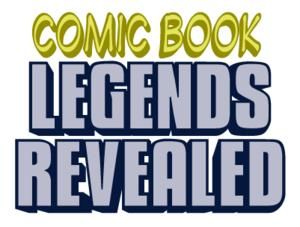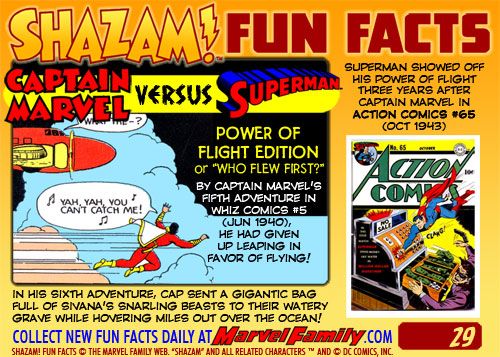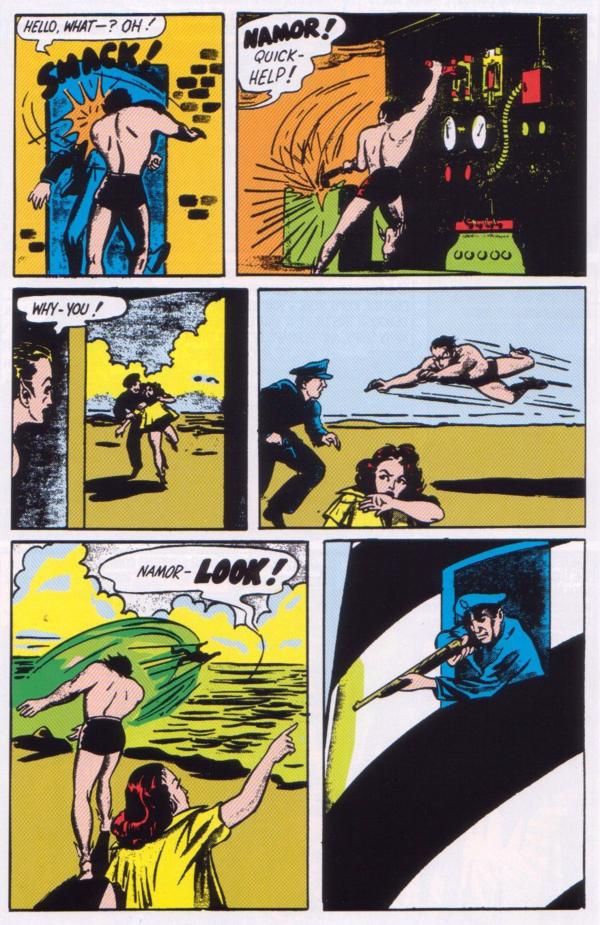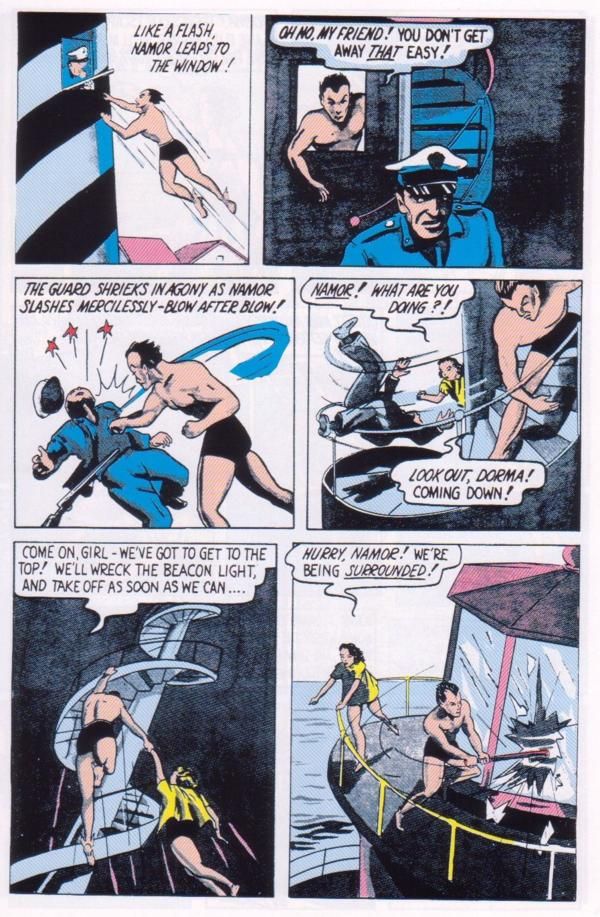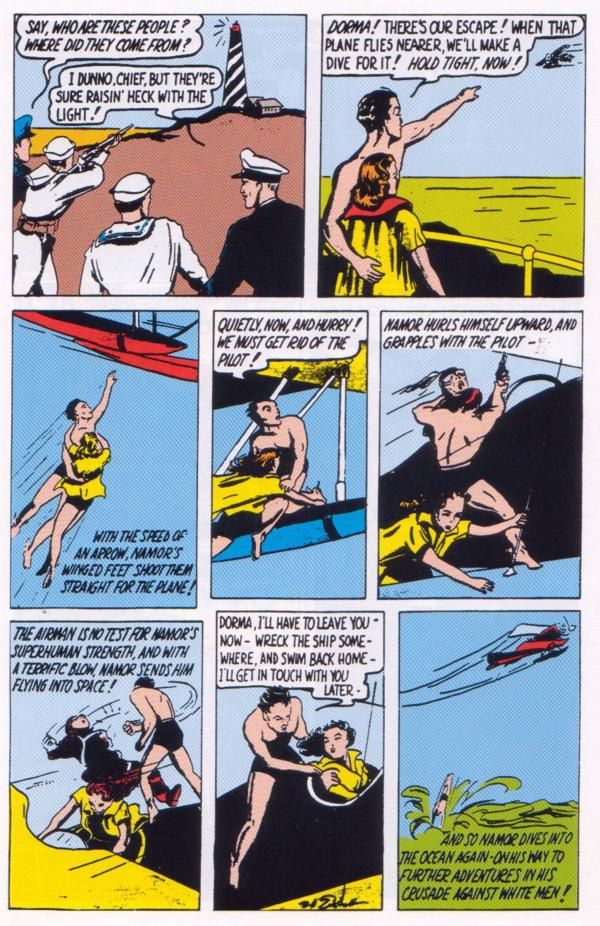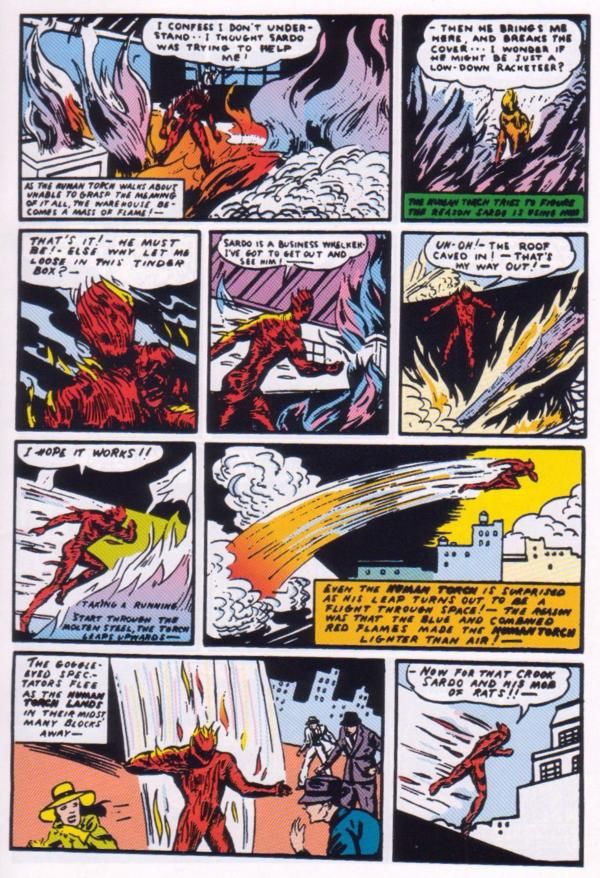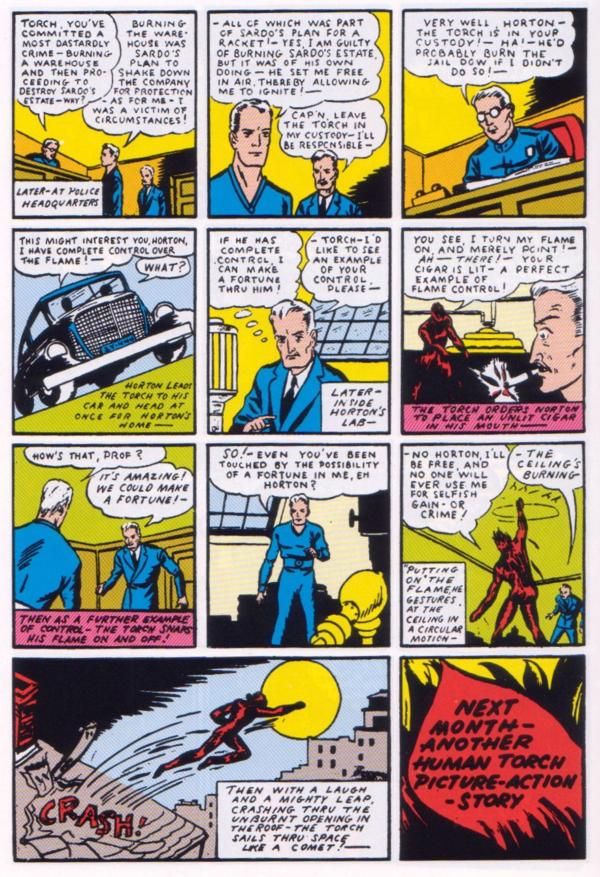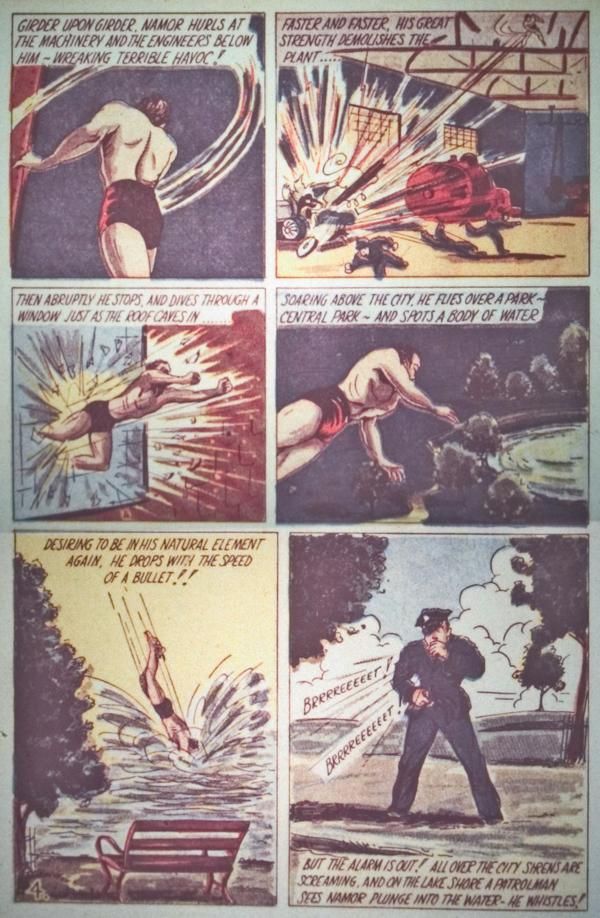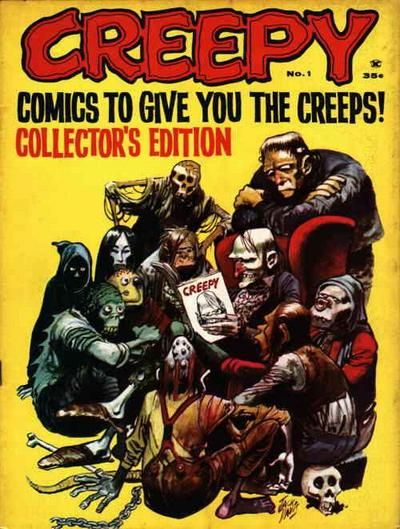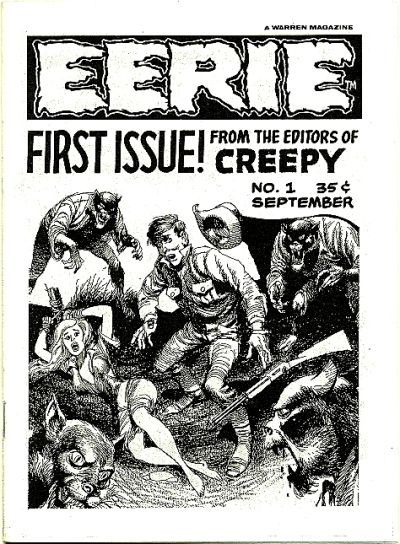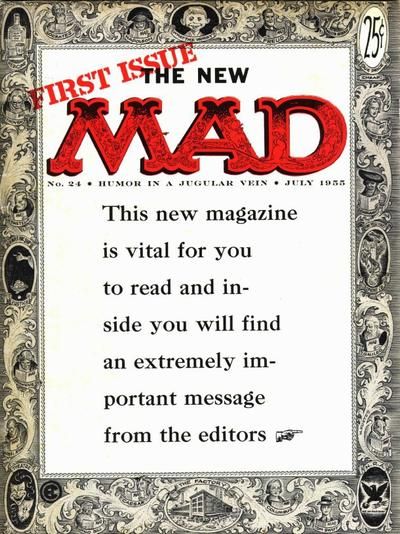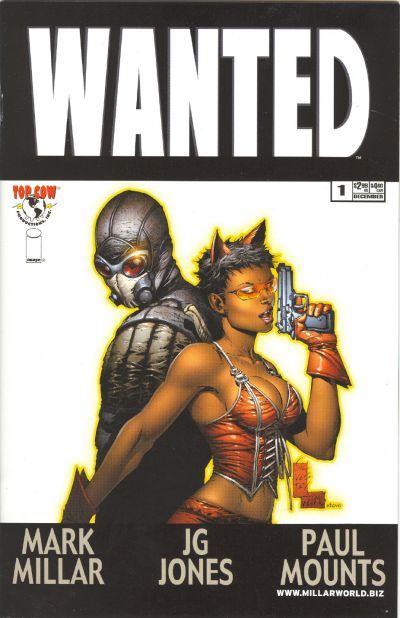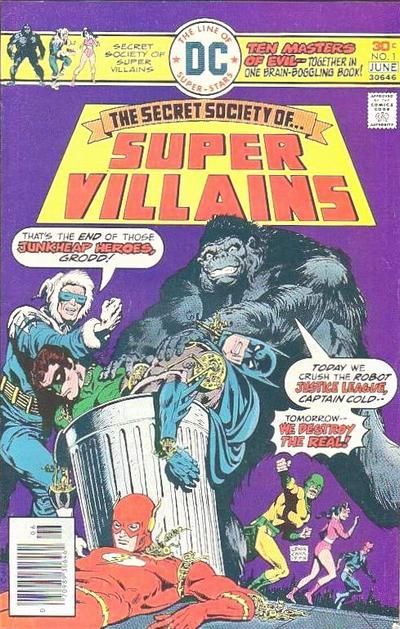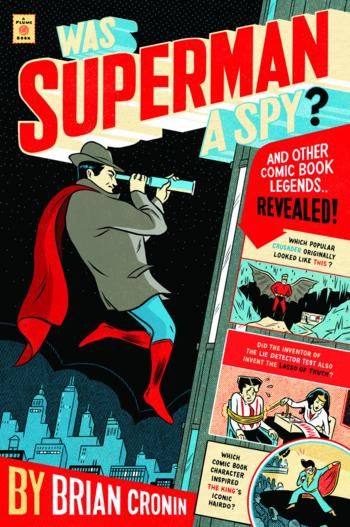Welcome to the two-hundred and seventieth in a series of examinations of comic book legends and whether they are true or false. Click here for an archive of the previous two hundred and sixty-nine.
Comic Book Legends Revealed is part of the larger Legends Revealed series, where I look into legends about the worlds of entertainment and sports, which you can check out here, at legendsrevealed.com. I'd especially recommend you check out this installment of Movie Legends Revealed to learn if it is true that all the clocks in Pulp Fiction are set to 4:20!
Follow Comics Should Be Good on Twitter and on Facebook. As I've promised, at 2,000 Twitter followers I'll do a BONUS edition of Comic Book Legends Revealed during the week we hit 2,000. So go follow us (here's the link to our Twitter page again)! Not only will you get updates when new blog posts show up on both Twitter and Facebook, but you'll get original content from me, as well!
Let's begin!
COMIC LEGEND: The first superhuman comic book character to fly was...the Sub-Mariner?!
STATUS: Appears to be True
As most of you know by now, DC Comics sued Fawcett Comics because they felt that Captain Marvel was infringing upon their copyrighted characters, Superman (I did a legend on it years ago here), due to a similar look and similar superpowers.
So it has always been an amusing little tidbit to note that in one of their most notable powers, it was Captain Marvel who got there first.
In the late 1930s and early 1940s, pretty much every character would LEAP to get where they were going, and that was the case for both Superman AND Captain Marvel (and many other knock-offs of Superman, including Wonder Man and Amazing Man).
However, Captain Marvel started flying in Whiz Comics #5, well before Superman did (most folks, including yours truly, give credit to the Superman cartoons of the 1940s for the addition of Superman's power of flight).
At his great Captain Marvel website, Walt Grogan goes into further detail about how Captain Marvel flew first. To read more, just click on the fun fact picture below!
This notable "scooping" by Captain Marvel has even led some places to credit Captain Marvel as the FIRST superhuman character to fly in comic books.
That is not the case.
Surprisingly enough, it is Namor, the Sub-Mariner, who owns that distinction!
In his very first appearance in mid-1939 in Marvel Comics #1 (which was actually his SECOND appearance, as he appeared earlier in the year in a giveaway comic that never was given away), Namor the Sub-Mariner flew!
Check it out...
Now, even if you wish to say that SOME of these above instances could be leaping, it seems clear that at least ONE of them is intended as flight, right?
The Human Torch, on the other hand, in the same issue, although lighter than air, was clearly leaping and not flying (and would continue like that for a number of issues before he, too, began to fly)...
Even if you don't think Namor is flying in #1, in the NEXT issue of Marvel Comics (now Marvel Mystery Comics), it shows Namor blatantly flying...
And all that predates all the other flying heroes (although they all followed very quickly after, as flying IS a lot cooler than leaping).
Pretty neat, huh?
I'd say "If you can find a comic book character who flew before Namor, let me know!" but do I really need to SAY that? If you know of one, I'm sure you'll let me know.
Thanks to reader Thomas Paine for the suggestion! And thanks to Walt Grogan for the Captain Marvel/Superman stuff!
COMIC LEGEND: James Warren did not have the Comics Code in mind when he created his black and white line of comic magazines.
STATUS: I'm Going With False
In 1964, Warren Publishing debuted Creepy, a black and white comic book magazine. Up until that point, Warren had been doing pictorial magazines, mostly those having to do with monster and horror films, and this would be their first foray into comic magazines.
The success of Creepy led to Eerie the next year...
Since these books were magazines, they were not subject to the Comics Code Authority.
Similarly, EC Comics' Mad Magazine was ALSO not subject to the Comics Code Authority because of its format.
However, it's pretty much undisputed now (I featured it as a legend years ago) that Mad did NOT become a magazine because of the Comics Code, but rather because Harvey Kurtzman would have left EC if it were not for the changeover to a magazine (of course, he ended up leaving anyways). The whole Comic Code avoidance issue was a bit of a happy accident.
Well, a reader named George wrote in to say that he read on a message board that Warren's incident was ALSO a happy accident - that Warren knew nothing about the Comics Code since he came from a magazine background, and that he was just convinced that doing comics would be a logical extension of his picture stories that he had in his magazines at the time.
According to the poster, Warren did not even LEARN about the Comics Code's existence until a few issues of Creepy had already been published.
I don't know what Warren interviews are being cited by this anonymous message board poster, but in the ones that I have read with Warren over the years, he's been pretty clear that he DID know about the Comics Code at the time.
In the classic Jon B. Cooke interview with Warren that first appeared in Comic Book Artist #4 (and later formed the backbone of the TwoMorrows Publication, The Warren Companion), Warren states the following:
The Warren publishing genre was horror and monsters, so it was logical to put this same theme into comics. A lot of serious thought preceded the decision to launch Creepy; a lot of soul-searching. The specter of EC and Bill Gaines—the humiliation he suffered, and the terrible things that Congressional committee did to him—hung over me. I knew that the industry's Comics Code Authority (which was very strong at the time) exercised an authority (a word not misused—they had authority!) over an entire industry. You could not print comic books or be distributed in America without their blessing and seal of approval. It was self-censorship, similar to the movies' Hays Office, which granted the Motion Picture Seal of Approval to a film before it was shown in movie theaters. The Comics Code saved the industry from turmoil, but at the same time, it had a cleansing kind of effect on comics, making them "clean, proper and family-oriented." How do I surmount this? Fasten your seatbelts. We would overcome this obstacle by saying to the Code Authority, the industry, the printers, and the distributors: "We are not a comic book; we are a magazine. Creepy is magazine-sized and will be sold on magazine racks, not comic book racks." Creepy's manifesto was brief and direct: First, it was to be a magazine format, 81/2" x 11", going to an older audience not subject to the Code Authority. Second: Creepy writers and artists must be the best. They won't be good and they won't be excellent. They will be the best. Those two formulas—magazine format and the best. If I could do that, the public will accept us and the industry will have to accept us. That was the blueprint for Creepy. That's how it started.
That's pretty much directly on point, right?
And I've never seen a Warren interview saying otherwise.
In addition, the initial editor on Creepy, Russ Jones, had this to say on his own website about a comic story he had written before Creepy came about...
This was to run in Famous Monsters, but sat on the shelf for quite a long time. Jim liked it, but comics still frightened him. For some reason, he believed the dreaded 'Code' would start to pry into his territory. The next assignment was the redoubtable Horror of Party Beach, photo/comic magazine.
Again, pretty much on point, and from someone other than Warren.
When you couple these two things in with the fact that the whole EC Comics/Comics Code disaster from a decade earlier was fairly well known, I think it is pretty darn reasonable to think that Warren knew about the Comics Code.
Enough so that I'm going with a "false" here.
Thanks to George for the suggestion! Thanks to Cooke, Warren and Jones for the information! Be sure to give Jones' Monster Mania site here a look see!
COMIC LEGEND: Wanted was based on a pitch by Mark Millar to DC for a Secret Society of Supervillains series.
STATUS: Enough Truth for a True
Mark Millar and JG Jones' Wanted was about a young man who finds out that his father is part of a secret society of supervillains.
Ever since the hit comic book came out in 2003, it has been rumored that the story was originally written for DC as a pitch by Millar for a mini-series about the ACTUAL Secret Society of Supervillains.
Like many things, the truth is somewhere in the middle.
In a great interview with Matt Brady at Newsarama, Millar elaborated:
Although it started life as a pitch for that, barely one bit of that remains from my original pitch. When you’re a DC fan in particular, you tend to write stories around DC continuity, and we’ve seen that quite a bit over the last ten years or so. People feel really obliged to have everything tie together, and I can understand it, because I did the same thing when I was there. So my thing really tied in with the Monocle and the Floronic Man, and the son of Deadshot, which is one of the few things – the protagonist as the son of a supervillain – that carried over from the original idea.
So that thing was about something else entirely, and the plot bore almost no resemblance to what finally saw print, aside from one tiny detail which was also changed a lot – the idea of a supervillain having a son who was unaware of how cool he really was, and how cool his dad was.
So the idea of doing a book where the supervillains were the stars was really what I took from Secret Society of Super-Villains, and turned that into Wanted. That was cool to me, because I like playing around with reversals – I like the idea of having Superman land in Russia, so it’s more interesting to me to make the villains the stars, rather than the heroes, and let them win and have the day, like the heroes do all the time.
So yeah – it came from there in a sense, but that original pitch could still be done because the story is so different from what turned into Wanted.
That's basically that, I think!
Thanks to Matt Brady and Mark Millar for the information!
Okay, that's it for this week!
Thanks to the Grand Comics Database for this week's covers! And thanks to Brandon Hanvey for the Comic Book Legends Revealed logo!
Feel free (heck, I implore you!) to write in with your suggestions for future installments! My e-mail address is cronb01@aol.com. And my Twitter feed is http://twitter.com/brian_cronin, so you can ask me legends there, as well!
As you likely know by now, in April of last year my book came out!
Here is the cover by artist Mickey Duzyj. I think he did a very nice job (click to enlarge)...
If you'd like to order it, you can use the following code if you'd like to send me a bit of a referral fee...
Was Superman a Spy?: And Other Comic Book Legends Revealed
See you all next week!

